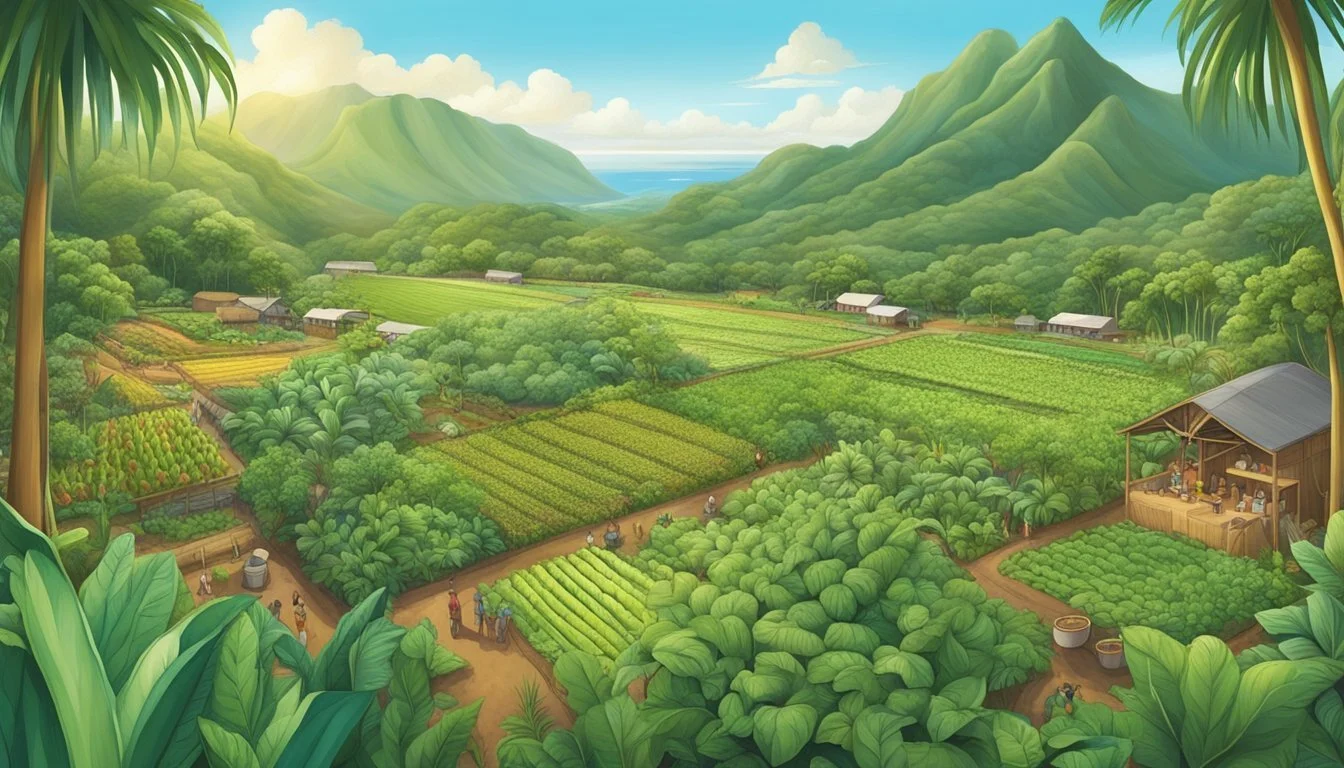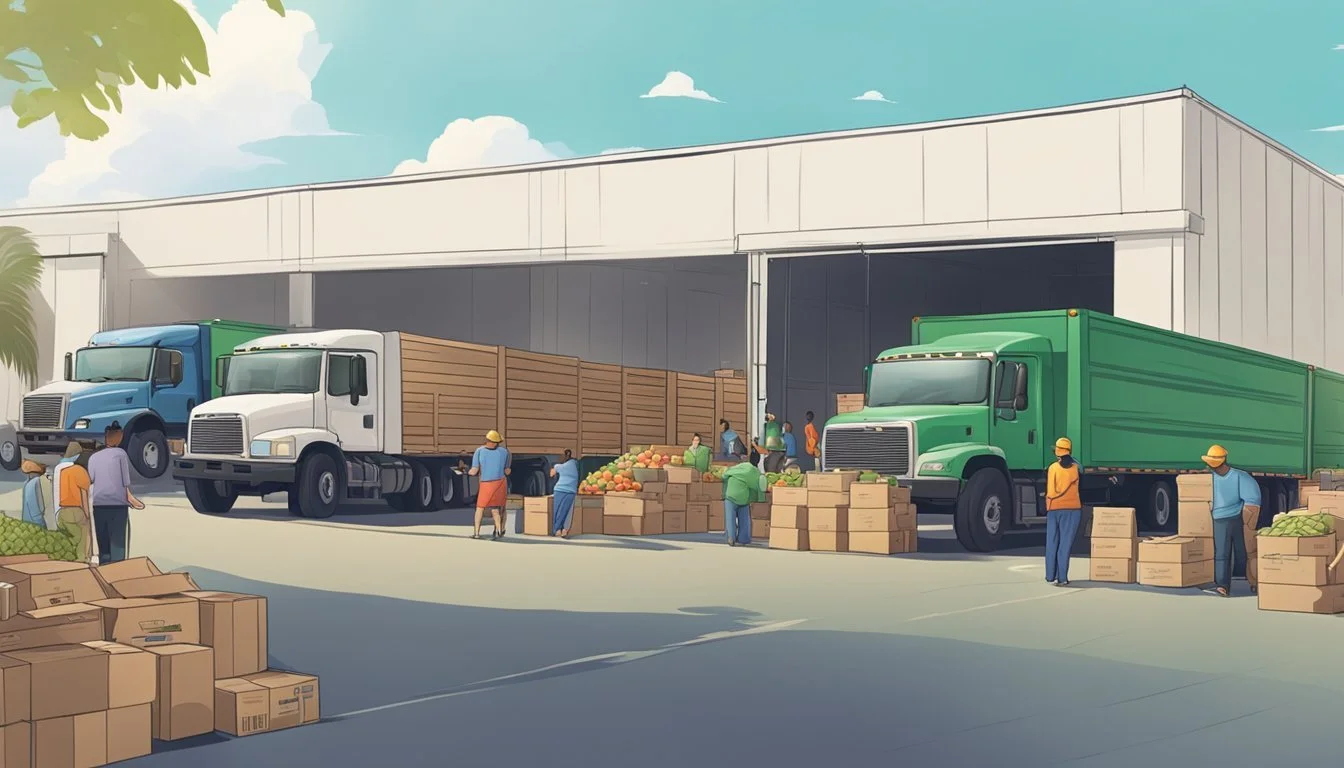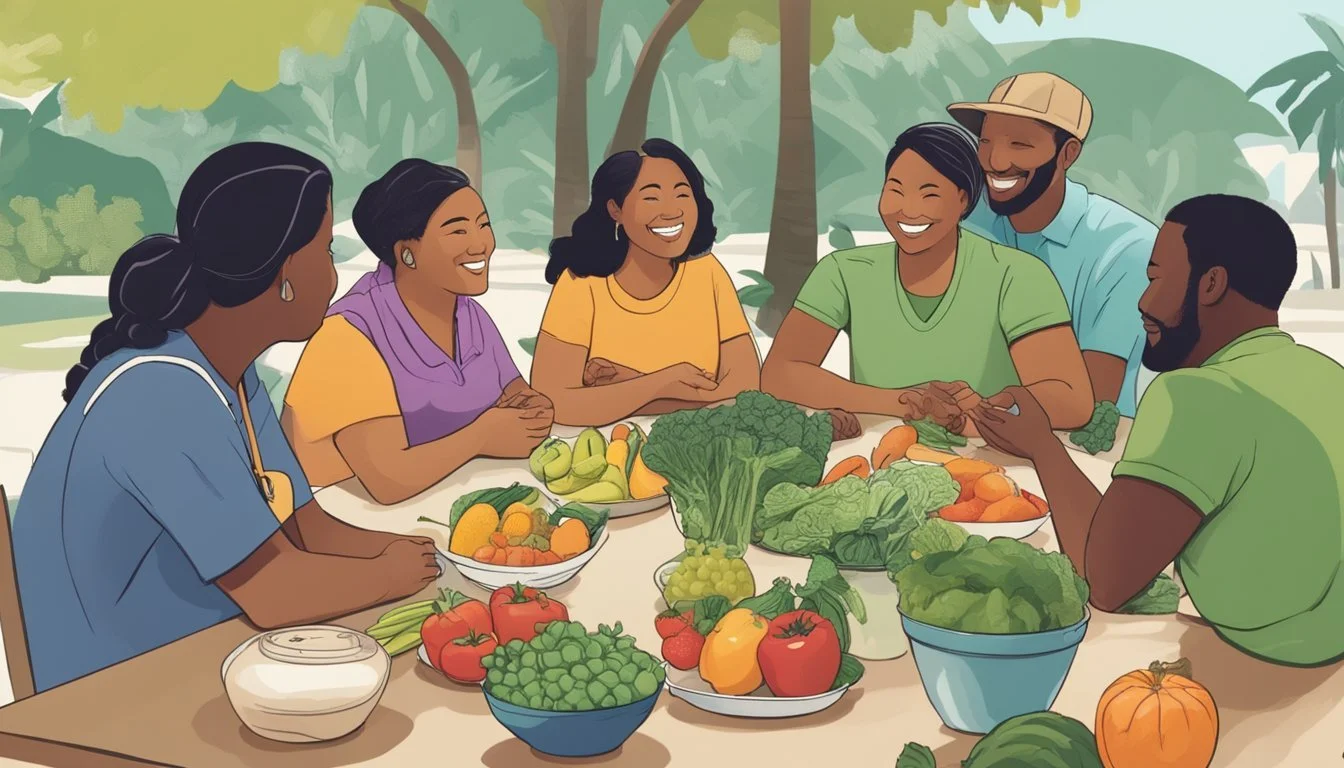Hawaii Food Challenges
Tackling the Island's Toughest Culinary Contests
Hawaii is known for its vibrant food culture, which includes a variety of eating challenges that entice both locals and tourists alike. These challenges range from towering burgers to enormous omelettes, offering a fun and often daunting way to experience the local cuisine. Some of these contests are held at familiar spots like Cheeseburger in Paradise, with their notable Cheeseburger Challenge that includes not just the burger but also chili cheese fries and a drink, reflecting the indulgent side of island eating experiences.
Beyond the excitement and entertainment, Hawaii's food challenges touch on deeper issues such as sustainability and economy. The state's heavy reliance on food imports has resulted in unique economic challenges, and the local food movement has been gaining traction as a way to address these issues. Initiatives are in place aiming to increase Hawaii's self-reliance and bolster the local economy by focusing on growing and consuming indigenous and locally-sourced foods, which might someday play a role in the food challenge scene as well.
Understanding Hawaii's Food Landscape
Hawaii's food landscape is uniquely shaped by its island geography, which has historically influenced local dietary habits and agricultural practices. Presently, the state faces modern challenges, most notably its heavy reliance on imported food, which creates particular vulnerabilities in its food security.
Historical Context and Indigenous Food Systems
Hawaii's indigenous food systems were once self-sufficient, relying on sustainable practices that supported a diverse diet from both land and sea. Native Hawaiians cultivated staple crops such as taro (kalo), sweet potato (uala), and breadfruit (ulu), which provided the basis for their nutrition and cultural practices. The traditional ahupua'a land division system represented a model for resource management, ensuring that communities had access to various food sources from mountain to sea.
Modern Challenges and the Reliance on Imports
Today, Hawaii's food supply chain is heavily dependent on imports; an estimated 85-90% of food consumed is brought in from outside the state. This modern reliance presents risks: disruptions in transportation, global economic fluctuations, and climate change impacts can all threaten Hawaii's food availability. The local agriculture sector, while producing a variety of crops, often faces challenges such as high land costs, limited water supply, and labor shortages, which impede the expansion of local food production.
Food Security and Insecurity
Food security in Hawaii is a pressing concern, given its isolated location and reliance on imports. Efforts to increase the production of local food aim at ensuring a resilient food system capable of withstanding global disruptions. Strategies include promoting sustainable agricultural practices, expanding urban farming, and revitalizing indigenous cropping systems. Despite these efforts, food insecurity remains a reality for many residents, exacerbated by high living costs and socioeconomic disparities. A focus on bolstering Hawaii's agriculture to produce more staple crops and decrease dependency on imports is key to enhancing the state's food security.
Impact of External Factors on Food Availability
Hawaii's food supply chain is uniquely affected by its reliance on tourism, vulnerability to climate change, and the unprecedented effects of the COVID-19 pandemic. These have collectively shaped the islands' food availability to a significant degree.
The Role of Tourism in Hawaii's Economy
Tourism is a major economic driver in Hawaii, significantly influencing local food demand patterns. The influx of visitors drives up demand for local food commodities, sometimes leading to shortages for residents. Data suggests that Hawaii's tourism sector can indirectly affect agricultural production priorities, thus impacting food availability for local consumption.
Effects of Climate Change and Natural Disasters
Hawaii’s geography makes it susceptible to various climate-related phenomena. Rising sea levels, changes in precipitation patterns, and increased frequency of extreme weather events constrain agricultural productivity. Notably, events such as hurricanes and volcanic eruptions can disrupt the food supply chain by damaging crops and infrastructure, thus compromising food security for local populations.
The COVID-19 Pandemic’s Influence
The coronavirus crisis underscored the vulnerabilities in Hawaii's food supply system. During the pandemic, disruptions in global supply chains coincided with a surge in unemployment, leading to increased food insecurity. Measures to curb the spread of COVID-19 also impacted local food production and distribution, further challenging Hawaii’s efforts to meet the nutritional needs of its residents during the crisis.
Strategies for Enhancing Hawaii’s Food Systems
Hawaii faces unique food security challenges but proactive strategies to enhance local food systems can lead to more sustainable and resilient communities. Focused efforts to advance agriculture, implement thoughtful policies, and support economic and community mechanisms are crucial.
Advancing Local Agriculture and Diversified Farming
Diversified farming is key to making local food more accessible and abundant in Hawaii. Increasing the variety of locally grown staple crops can lessen dependency on imports and improve self-sufficiency. Investment in agricultural technologies and best practices can bolster farming productivity and sustainability, ensuring a stable source of nutritious foods for the local population.
Expansion of Farmlands: Identify and develop additional lands suitable for agricultural use, applying sustainable farming practices.
Agriculture Education: Offer comprehensive training to support new and existing farmers in modern, sustainable agriculture methods.
Implementing Policies and Planning for Food Resilience
Strong policies and planning are required to create a resilient food system in Hawaii. The government can play a pivotal role by crafting legislation that encourages local production and protects agricultural resources. Additionally, disaster preparedness planning must account for food system vulnerabilities, and strategic reserves of staple crops should be maintained.
Legislative Incentives: Develop incentives for local food production and implement zoning laws that encourage farming.
Food System Framework: Adopt a State Food Policy Framework that addresses food security and resilience.
Economic and Community Support Mechanisms
Economic support mechanisms and community-driven initiatives can vitalize Hawaii's food system. Providing financial incentives and resources for local farmers and food businesses can strengthen the economic viability of the local food sector, while community-based programs can encourage collective action in pursuit of a sustainable food system.
Grants and Loans: Establish targeted funds to assist small-scale farmers and community food enterprises.
Consumer Awareness: Foster market demand for local products via education campaigns about the benefits of a community-based food system.
By employing these strategies with a focused and informed approach, Hawaii can nurture a more secure and robust food system that benefits all residents, supports local farmers, and ensures the islands' sustainable future.
Hawaii’s Food Distribution and Infrastructure
Hawaii faces unique challenges in food distribution and infrastructure, exacerbated by its island geography that necessitates reliable transportation, efficient storage solutions, and support through grants and NGO initiatives.
Challenges in Transportation and Storage
Transportation of food in Hawaii is a complex process, often requiring multimodal systems that include air and sea freight. Storage also becomes a critical issue, as the perishable nature of many food products demands robust facilities to maintain freshness upon arrival. The state has a pressing need for advancements in technology to improve the efficiency and reliability of these systems.
Role of Non-Governmental Organizations (NGOs)
Non-Governmental Organizations play a pivotal role in Hawaii's food distribution network. The Hawaii Community Foundation, for example, collaborates with various partners to channel funding into projects that strengthen local food systems. These NGOs often fill gaps in the infrastructure, providing support where state endeavors may fall short.
The Importance of Grants and Funding for Food Initiatives
Grants and funding are lifelines for improving Hawaii’s food distribution infrastructure. Initiatives like those funded by the Agribusiness Development Corp showcase how strategic financial support can bolster the entire supply chain, from enhancing distribution networks to investing in technology that can improve storage capabilities and managing the distribution of perishable goods.
Programs and Support for Food-Insecure Populations
In Hawaii, food insecurity is a significant challenge, and various programs have aimed to provide support to those in need. These initiatives range from federal assistance programs, local food banks, to educational efforts that enhance food literacy.
SNAP and Other Food Assistance Initiatives
The Supplemental Nutrition Assistance Program (SNAP), aids numerous individuals in Hawaii. For example, the Da Bux program not only addresses food insecurity by providing additional funds for food purchases but also positively impacts the local economy. SNAP benefits are crucial, as they allow recipients to purchase necessary groceries at participating retailers, thereby mitigating food insecurity and fostering community resilience.
Community Food Banks and Donations
Food banks in Hawaii, such as the Hawaii Foodbank, play an essential role in food distribution to the food insecure. They rely heavily on donations of both food and funds from the community. Local donations are distributed through a network of charitable programs and agency partners, ensuring that those in need receive support.
Educational Outreach and Food Literacy
Efforts toward educational outreach and enhancing food literacy are pivotal. These programs inform the community about nutrition, food preparation, and the importance of a sustainable food system. The Hawai'i Public Health Institute addresses food insecurity by spotlighting education as an avenue to empower individuals to make informed choices concerning their diet and health. Knowledge is as vital as the food itself, and education serves as a long-term tool to combat food insecurity.
The Economics of Food in Hawaii
The economic landscape of Hawaii profoundly influences its food system, marked by high costs of living, unique challenges in the agricultural sector, and the need for strategic incentives to bolster local food production.
Cost of Living and Food Prices
Hawaii's cost of living is significantly higher than the national average, largely due to its geographic isolation. Food prices are substantially affected by shipping expenses; a gallon of milk or a loaf of bread can cost up to twice the mainland price. The Hawaii Food Basket indicates that an average family's monthly food expenditure is strikingly higher than on the continental United States.
Basic Food Costs (Example):
Gallon of Milk: $8.00
Loaf of Bread: $6.00
Dozen Eggs: $4.50
Employment and the Agricultural Sector
The agricultural sector faces a complex interplay of high land and labor costs, which contribute to Hawaii's unemployment and inflation challenges. Despite agriculture's potential, the sector only accounts for a small fraction of the state's overall employment. Strategies to increase employment in agriculture could mitigate unemployment while enhancing local food production.
Unemployment Rate: 5%
Agricultural Workforce: < 5% of total employment
Incentives for Local Producers and Businesses
Addressing rising food costs and the dependency on imports requires bolstering incentives for local producers. Hawaii has implemented strategies outlined in the Increased Food Security and Food Self-Sufficiency Strategy to incentivize local production. These include tax credits, grants, and subsidies aimed at reducing the gap between the cost of local and imported goods.
Incentive Examples:
Tax Credits for New Agricultural Ventures
Subsidies for Farm Equipment and Supplies
Grants for Sustainable Farming Practices
Future Outlook for Hawaii’s Food Sovereignty
Hawaii's food sovereignty challenges are being met with initiatives that aim to educate, innovate, and legislate for a more resilient and self-sufficient food system. The strategies emphasize the significance of sustainability and recognize the unique role of the Islands in pioneering food security solutions for its communities.
Role of Education in Sustainable Food Systems
Educational programs are pivotal in shaping a sustainable future for Hawaii’s food systems. Initiatives led by institutions like Kamehameha Schools focus on teaching agricultural practices and environmental stewardship to young learners. This emphasis on education ensures that future generations understand the importance of sustainability and are prepared to contribute to a self-sufficient Hawaii.
Partnerships and Public Policy Development
Collaborative efforts between the state, non-profits, and private entities aim to strengthen Hawaii’s food sovereignty through partnerships and public policy development. Public policy plays a crucial role in providing support to low-income families and creating opportunities for local farmers. The development of a robust food policy framework can significantly enhance the resiliency of Hawaii's food system against external shocks.
Envisioning a Self-Sufficient Hawaii
Hawaii envisions a future where the county is less reliant on imported food and more focused on local production to achieve self-sufficiency. By fostering a resilient local agriculture industry, Hawaii aspires to create a food-secure state where the community has consistent access to nutritious, locally-grown food, reducing the vulnerability of low-income families and bolstering overall food security.







